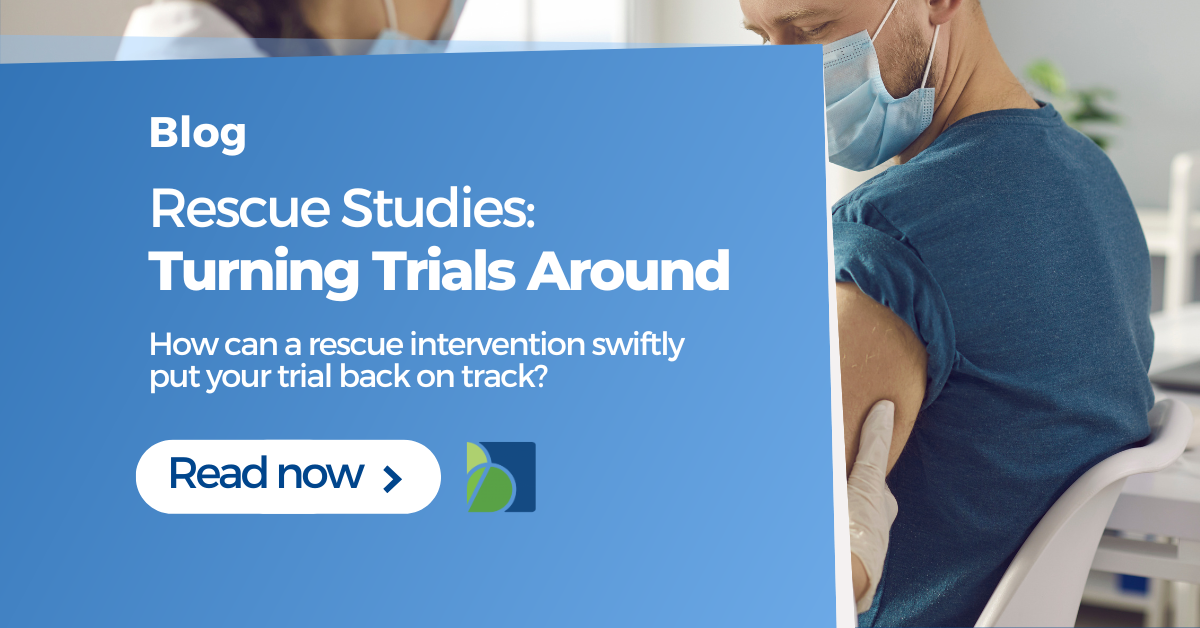Clinical trials, though meticulously prepared, often encounter unforeseen issues that cause derailments. During such times, a carefully selected rescue intervention can help swiftly put the trial back on track. Imagine meticulously planning every detail of your clinical trial, only to watch as unforeseen issues emerge, causing unexpected delays. It’s like setting up dominoes perfectly, then having a sudden breeze knock them over before you’re ready. Now consider having a well-designed rescue strategy at your fingertips, ready to swoop in and set things right. These strategies work like your personal rapid response team, deftly handling issues and getting your clinical trial back on track. After all, a stumble doesn’t have to end the race, does it? Let’s dive deeper into the world of clinical trial rescue strategies.
Uncovering the Causes: What Puts Clinical Trials in Distress?
Have you ever wondered what can throw a well-prepared clinical trial off course? Here are some of the potential reasons.
Resource shortages are a common challenge in clinical trials. Be it internal limitations like staffing or external issues such as supply chain disruptions; inadequate resources can seriously impede the progress of a clinical trial.
At times, a clinical trial may suddenly find itself in need of additional services not initially planned for. This unexpected requirement can disrupt the project timeline and lead to substantial delays.
Finally, contractual failures are another major issue. This occurs when a party involved in the trial fails to fulfil their obligations as outlined in their contract. This failure can make the trial challenging, often needing prompt intervention.
Strategic Planning for Clinical Trial Rescue
Planning a rescue operation for a clinical trial isn’t just about pulling the trial out of its distress. It’s about setting it back on the right path with as little disruption. Here are some steps to keep in mind during this transition:
As you initiate the rescue operation for your struggling clinical trial, specific considerations can mean the difference between a successful recovery and more complications. Let’s take a closer look at these crucial factors.
- Securing Management Approval: It’s essential to factor in the time needed to present the case to management and secure their approval. Before moving forward with your rescue plan, it’s essential to have the management on your side. This means taking the time to articulate your strategy and its necessity, assuring them of its viability, and earning their trust before involving the incumbent central lab. Think of it as laying the groundwork for the steps to come.
- Internal Support for the Rescue Rationale: You can’t rescue a trial single-handedly. It’s crucial to ensure that the rationale behind the rescue operation is supported internally. This means rallying your team and ensuring everyone is on the same page. Garnering internal support for your rescue strategy is just as crucial as having the management’s backing. This entails getting every stakeholder aligned with the rescue plan. After all, a united team can propel your clinical trial towards a successful recovery more effectively than a divided one.
- Identifying Affected Relationships: Like a complex network, a clinical trial involves numerous relationships that could be affected during a rescue operation. Identifying these relationships and planning accordingly is a critical part of the process.
- Understanding Budgetary Needs: Last but certainly not least, it’s essential to understand your budgetary requirements clearly. This involves estimating the costs involved in the rescue operation and ensuring the funds are available when needed. Finances are the lifeblood of any project, and clinical trials are no exception. It’s crucial to understand your budgetary needs in detail and plan accordingly. A poorly planned budget could fuel the fire, leading to further complications. Thus, financial planning is a cornerstone of any effective rescue operation.
- Bridging Communication Gaps: Navigating the Productivity Curve: During the rescue process, you can expect the productivity of the incumbent CRO to take a hit. This is a crucial factor to account for and is precisely why robust communication strategies are vital. The right communication channels and methods can help ensure the rescue operation doesn’t face unnecessary hurdles due to decreased productivity. Remember, clear, timely communication can be a lifeboat in the stormy sea of a rescue operation.
Ultimately, rescuing a clinical trial involves a delicate balance of swift action, careful planning, and meticulous execution. It’s about taking a step back, evaluating the situation, and then moving forward with a strategic plan designed not just to save the trial, but to ensure it thrives.
Selecting the Ideal Rescue CRO
Choosing the right Contract Research Organization (CRO) to rescue your clinical trial can make a difference in its recovery journey. But here’s the catch: the rescue mission for every clinical trial is as unique as the trial itself and, thus, requires a CRO that can meet its specific needs.
Think of the rescue CRO as your partner in navigating the turbulent waters of a struggling clinical trial. This isn’t a one-size-fits-all situation. The ideal CRO for your rescue mission should understand the distinct requirements of your study and have the capabilities and expertise to address them.
This could mean having access to a specific patient population, possessing the ability to meet certain timelines, or offering particular technological solutions. It’s like piecing together a puzzle – each piece, or in this case, each aspect of the trial, needs to be carefully considered and addressed.
Ultimately, it’s about finding a rescue CRO that understands the unique challenges your clinical trial is facing and has the skills and resources to tackle them effectively.
Remember, a successful rescue operation requires more than just a ‘rescue’ CRO; it needs a ‘rescue partner’ who is prepared to navigate the complexity of your trial and steer it back to success.
Providing Essential Data to Rescue Study CRO
When partnering with a rescue CRO, providing them with all the essential information about your clinical trial is crucial to the success of the rescue operation. Imagine equipping your rescue partner with the correct set of tools – the data – to perform their role most effectively.
Rescue Study Data
Firstly, you want to provide comprehensive details about the rescue study itself. This could include the number and geographic locations of all the sites, their current IRB/ethics status, the progress status of each site (both in terms of start-up and activation), and any new countries or sites, if applicable. Details about grant payment status could also be relevant.
Patient Data
Next up is the information about patient engagement and monitoring. This includes the current status of patient engagement tools, re-monitoring or sampling requirements, and expectations for monitoring moving forward. If you have implemented patient-centric solutions like travel provisions or reimbursement cards, the CRO should be aware of these too.
Regulatory Data
Then, there’s the crucial aspect of regulatory data. Information about EU legal representation, controller/processor agreements under GDPR, and insurance ownership should be shared with the CRO.
By providing this information, you’re arming the rescue CRO with as much information as possible to understand the current state of your clinical trial. The more transparent and detailed you are, the better equipped the CRO will be to step in and guide the trial back on track. Think of this data as the navigation map guiding your rescue partner to drive your clinical trial towards its destination – success.












